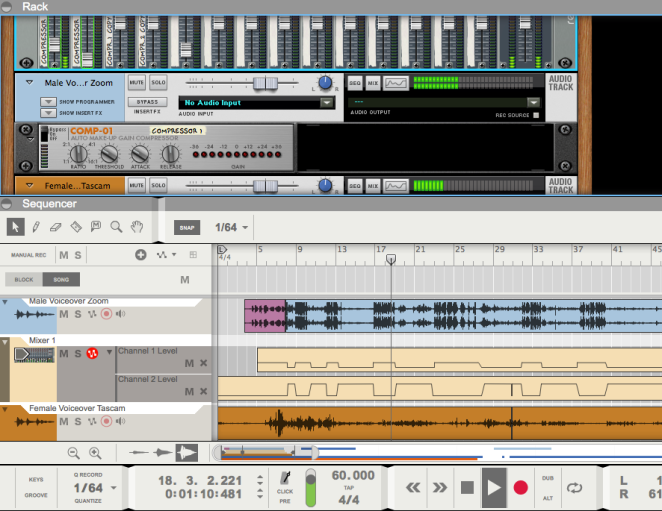As well as study, and extra curricular bass pursuits, I freelance to fund all these wonderful activities.
I recently worked on a 360 degree Video project. I worked as the Audio Technician on shoot and also worked on the Audio clipping, post production.
This is the final video that was presented to the client. Take a look then read on.
To give a bit more context to the Video, after being shot and edited it was presented to targeted attendees during a trade show. The Video was viewed using a mobile phone in conjunction with a custom Google Cardboard, made with promotional design graphics promoting the service being sold

A Screen shot of the Author’s project. Some automation and clip editing is present in the shot.
There were an number of technical challenges we had to take on with the shoot, some of the solutions where equipment based, and others where worked out in post production. Being a freelancer I wasn’t involved in much of the pre production process and I was brought on later than I perhaps would have liked. I believe with some extra time some of these issues could have been fixed prior to the day of the shoot.
The First of which were the lines performed by two actors for the shoot, they had to be clearly heard because the information contained was important for the product’s description. The obvious equipment choice in a standard shoot would be a shot gun mic, but because it was a 360 video, there was no space hidden from the camera for a mic operator to stand. The solution was two Lapel Mics, recording into two portable audio recorders that actually stayed with the actors for each shot. We had an individual recorder for each actor. The use of lapel mics brought on wind issues, this is because lapel Mics are small and don’t come with particularly high quality windsocks, an oversight of the shoot. Due to a high wind environment, we had to rely on cutting out wind in post production. Most of this was done by simply muting each actor’s mic while they weren’t speaking, this meant at the very least, there wasn’t a double up in wind being played on the master channel.
The next step was to EQ some of the wind out of the audio track. Most of the wind recorded sat a relatively low frequency’s, this meant we could cut out entire frequency ranges without compromising much of the tonal quality of the actors voice. A simple low shelf cut took out 20% of the remaining wind, making the actors voice’s clearer still. Finally there were a few volume adjustments made to individual lines for each actor, this was done to create a consistent speaking volume for each actor throughout the video. This was done as a minor improvement rather than a critical step in the editing process.
Good to see the process and how you troubleshooted the problem. Interesting read.
LikeLike